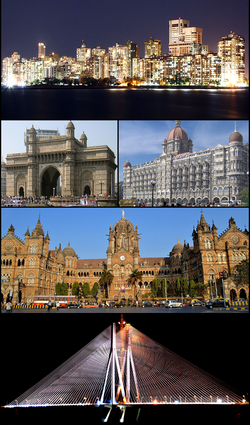This article has multiple issues. Please help improve it or discuss these issues on the talk page . (Learn how and when to remove these messages)
|
Tourism in Mumbai (Bombay) is an industry that attracts almost 6 million tourists per year, making it the 30th-most visited location worldwide. [1] According to United Nations, as of 2018, Mumbai was the second most populous city in India after Delhi and the seventh most populous city in the world with a population of 19.98 million. [2]
Contents
- Economic impact
- Climate
- Water activities
- Parks and recreation
- Forts and caves
- Film City
- Other attractions
- Religious destinations
- Miscellaneous
- Other important historical sites
- References

